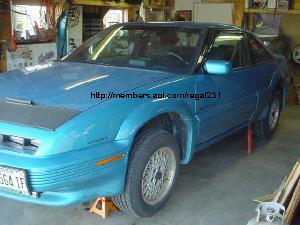
Fuel Pump
On a nice spring day headed home on the Interstate I noticed that all of a sudden I was out of horsepower...so much so that she was having a hard time even keeping speed. I decided it would be best if I'd pull off on to the next off ramp and try to see if I could find a quick fix. Well, a quick scan showed nothing but this car definitely wasn't going anywhere. A call to the car carrier and I got to ride home in a flat bed. Initially I thought that I had lost a coil, as it seem like to be running on about 4 cylinders, but was idling well, just bad with load. So I got it home, waited a day and tried to see if I could discover the problem. The problem had gotten worse as now the car wouldn't even start without the pedal being depressed and wouldn't idle at all. Now, before I started in with the ignition system, I did a few basic tests, check for codes, check fuel pressure...oops...no fuel pressure. Another check showed that the fuel pump wasn't running. Dead pump.

The first step was to get the car in the air. I used the good old four jack stand method and got the car about a foot and a half off the ground. Of course, I had about 18 miles on a full tank, so it needed to be drained. GM recommends pulling the Fuel Filler Vent pipe that is next to the Fuel Filler Hose and drain it from there. I've got a small hand pump to get the fuel flowing, and syphoned about 14 gallons from the tank (she holds 16.3 gallons). Below is a side view (tire removed for access, the next is a shot from below, showing the two pipes). Both of these will need to be disconnected to remove the tank and use a standard radiator hose clamp.
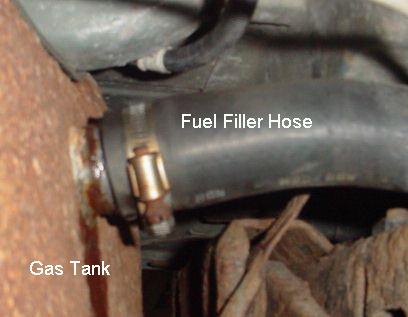
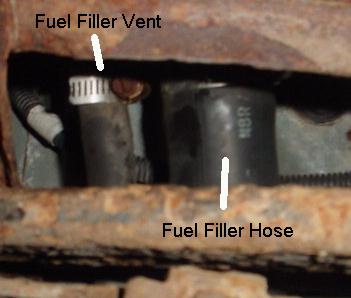
Once the fuel was drained (it took about 1/2 an hour with the small hose I used), I disconnected the fuel lines to the front of the car. This includes the one to the fuel filter and the one which is a return. Both of these has GM quick fittings, and were easy to work. The 3rd hose is a vent hose which connects behind the tank. The pictures below show all these connections, the first the front of the tank, the second the connections at the back. Also shown is a rear strap bolt.
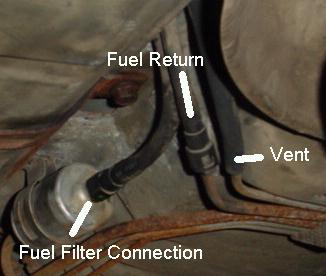
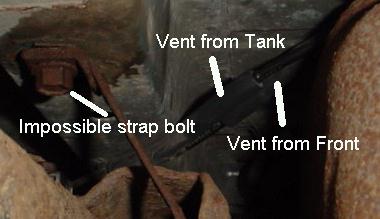
I actually totally forgot about the back vent hoses and they disconnected themselves when I dropped the tank. Now, with all the hoses disconnected, it was time to remove the strap bolts and drop the tank. Well, easier said then done. The front strap bolts were easy, all I had to do was remove a heat shield for the exhaust. The rear bolts...impossible. They are inline with the rear suspension and there just isn't any clearance to get a ratchet on them. There is barely any clearance to swing a wrench, and everything is so tight (and rusted) that removing them is next to impossible. I ended up dropping the tank by only disconnecting the front of the straps. All worked out well but if need be I was ready to cut the straps and replace them once the tank was down. Oh, don't forget to unplug the fuel pump, but this can be done after the tank is down.
From here, things got easy. With the tank out, I cleaned up the locking ring assembly and and pulled out the pump/fuel level assembly. You can see how my tank is pretty rusty, but it's not worth replacing. As for the pump, the sock is clogged and totally collapsed, which probably played a role in the pump failing.
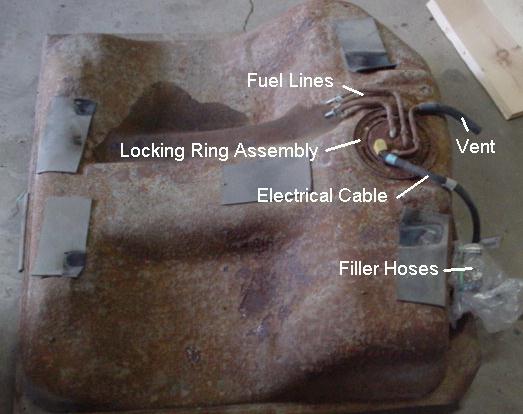
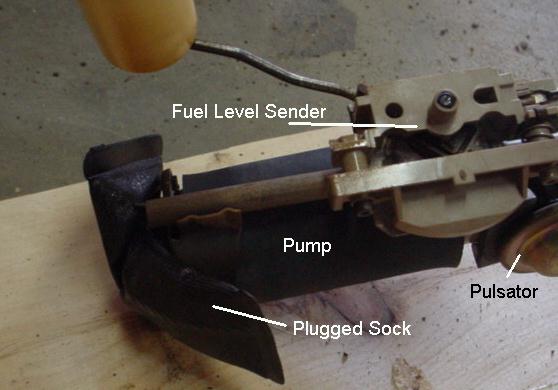
I ordered and installed a new pump, new sock, and new pulsator from GM. I ordered from www.gmpartsdirect.com as they have the best GM prices, although they were special ordered and took about a week to get after I placed the order. It was about $10 for the sock, $10 for the pulsator, and $80 for the pump. While I had the pump/sending unit out, I sucked out some of the grit on the bottom of the tank and reinstalled everything. Of course, installation is reverse of removal and everything went back together nicely. The total for parts with shipping was just under $120 and took me about 5 hours taking my time. Rust was a time eating issue along with figuring things out. If I had to do it again, I could probably do the entire project in about 2 hours.
I put about 4.5 gallons of fuel in the tank, cycled it a couple of times, and the car started right up. A quick check of fuel pressure shows 42 psi, close enough for government work.
If you have any questions or comments, please feel free to contact me at TheReflex1@aol.com.